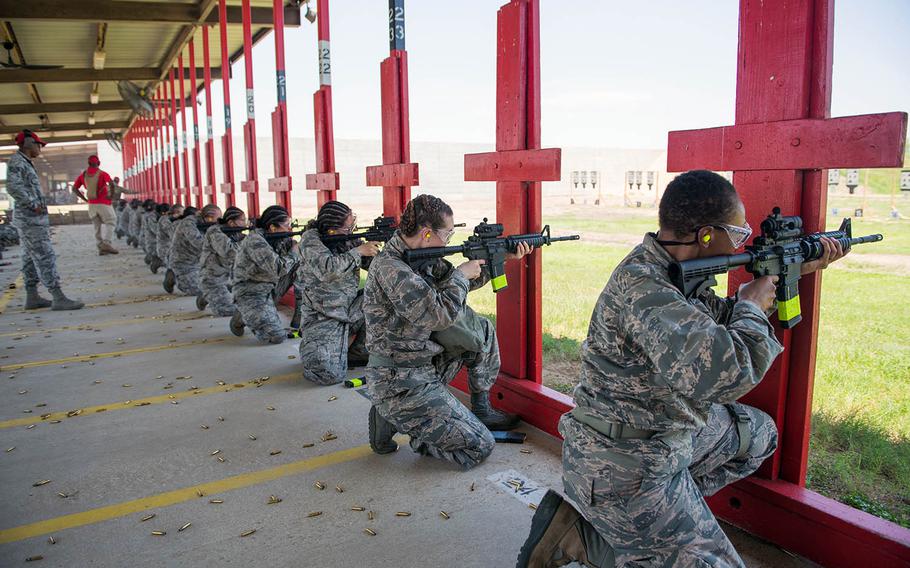
U.S. Air Force trainees at Joint Base San Antonio-Medina Annex fire their M4 carbines during a weapons familiarization course on June 8, 2019. (Sarayuth Pinthong/U.S. Air Force)
Changes to Air Force basic training this summer include switching to the M4 carbine from the M16 and an increased emphasis on hand-to-hand fighting skills.
Training on the M4 is part of an emphasis on preparing new airmen for deployment into areas of potential combat, and the first recruits to qualify pulled triggers July 8 at Joint Base San Antonio-Lackland, Texas.
Between 20,000 and 30,000 airmen graduate the 8 ½-week course annually, according to the Air Education and Training Command website.
The M4 is the weapon would-be airmen would likely carry while deployed to a combat zone, said Chief Master Sgt. Lee Hoover Jr., the superintendent of the 737th Training Group at Lackland.
“While M16s remain in Air Force inventory, the Air Force has been transitioning away from the M16 since the 1990s,” Hoover wrote in an email to Stars and Stripes last month. “As a result, most Airmen will deploy using the lighter, smaller, and more versatile M4.”
The M4 is shorter than the M16, which allows the shooter to maneuver more freely in urban environments and transition smoothly when entering and exiting vehicles, said Staff Sgt. Joshua Mitchell, a combat arms instructor from the 18th Security Forces Squadron at Kadena Air Base, Japan, in an email Thursday.
The M4, a variant of the M16, has an adjustable stock, making it more suitable for close-quarters engagement, according to a military.com fact sheet. It also features a built-in accessory rail that can accommodate a variety of optics.
For Air Force recruits, the switch to M4 training coincides with three additional hours of range time for a total of eight hours. Trainees will spend an extra hour on the firing line and two additional hours in the classroom, Hoover said.
Trainees will also fire 40 more rounds – a total of 100 – and become familiar with the M-68 “red dot” optic sight and potential causes of M4 failures.
Trainees will now participate in expanded self-defense training includes physical sparring sessions with protective gear, Hoover said. Those sessions had been simulated, but the Air Force now requires trainees to apply the techniques on actual opponents in controlled circumstances.
Hoover did not specify the self-defense system being taught in basic training or how the instructors were trained. The sparring sessions were approved by safety professionals and are supervised by training instructors to avoid injuries, he said.
bolinger.james@stripes.com Twitter: @bolingerj2004